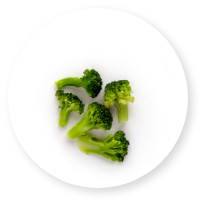Whether you buy plain, fruit-flavored or vanilla, yogurt can be eaten with a spoon as a simple snack or used in a variety of other delicious and kid-friendly ways. You can layer it with chopped fresh fruit and crunchy whole grain cereal for a parfait, use plain yogurt in place of sour cream on baked potatoes or quesadillas, or get creative in the kitchen by blending it into smoothies, frozen fruit pops or a creamy yet healthy dip. Yogurt is nutritious; it provides calcium and vitamin D for bones and teeth, protein for strong muscles and carbohydrates for energy.
Here is a yummy yogurt recipe to try with your family.












Share
Share this link via: